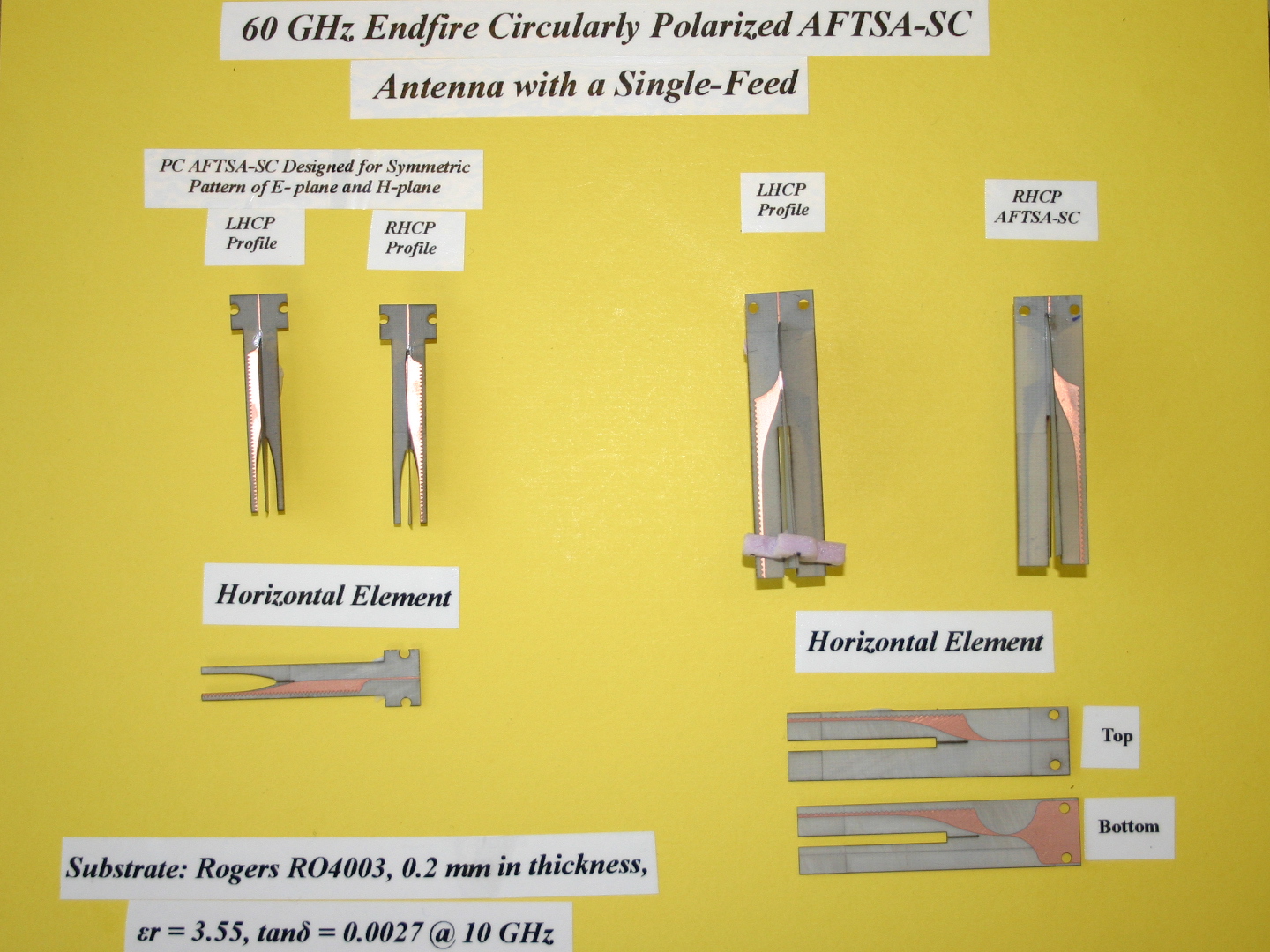

Vivaldi tapered slot software#
Unzip and use this plot-file along with our downloadable 3D plotting software HERE.
Vivaldi tapered slot full#
The full set of 1671 spherical plot-files can be downloaded HERE in “zipped” format.

The test report details higher level performance data, such as: Forward Gain, Peak Gain, Radiation Efficiency, and VSWR/Return-Loss vs Frequency. This extensive test program covers full 3D spherical gain patterns at 1671 stepped frequencies from 1300 MHz to 18 GHz in 10 MHz steps. This antenna is fed by a standard “5-pin” PCB mounted right-angle SMA jack, oriented away from the back of the antenna as shown.Ī full Excel spreadsheet 3D gain results report can be downloaded HERE.

Please note, full 3D plots are available at all 1671 test frequencies! A 1300 MHz to 18 GHz forward (and peak) gain graph is also shown below. This effect can be seen by comparing the 3D gain plots at 3800 MHz and 15 GHz below. From 7 to 18 GHz it also displays forward gain, although the main “beam” breaks up and peak gain is not right along the +Z axis.

It has forward gain averaging 4 to 6 dBi along its main axis. 21-23rd 2010.This functional 10cm “tile” sized Vivaldi antenna works well from about 1500 MHz to 7 GHz. Duckworth,'Self-Supporting Coaxial Antenna with an Integrated Balun and a Linear Array Thereof', Proceedings of the Antenna Application Symposium, Allerton Park, Monticello, IL, pp.282-284, Sep. Vishwanath Iyer, Andrew Cavanaugh, Sergey Makarov, R. High Gain Vivaldi Antenna for Radar and Microwave Imaging Applications International Journal of Signal Processing Systems Vol. The reflection coefficient between 4-4.75 GHz does degrade to about -8 dB. Comparing the reflection coefficient in 3 - 6 GHz range of the fabricated prototype and the model reveals an acceptable performance. The antenna realized gain achieved over the band 3-10 GHz at boresight is very close to the gain result. The proposed antenna covers the Federal Communications Commission defined UWB spectrum and has more than 3.5:1 impedance bandwidth (from 3 GHz to more than 11 GHz). Choose the two harmonic signal frequencies to be at 3 and 11 GHz respectively. Keywords - Ultra wide band, Tapered Slot Vivaldi. In the xy-plane we will use the component of the electric field for analysis while in the xz-plane we will use the component of the electric field.Ĭreate Points in Far-Field and Calculate Electric Field Define the far-field sphere radius and the set of observation angles in azimuth and elevation. This proposed antenna had been designed and simulated using. the xy-plane and the other at az = 0 degrees, i.e. In addition, the directivity and antenna gain of the TSERC structure Vivaldi antenna has been significantly improved when compared to a. The proposed modified structure has the capacity to extend the low-end bandwidth limitation. Choose the angles over 2 orthogonal planes the first specified at elevation = 0 degrees, i.e. In this letter, a novel tapered slot edge with resonant cavity (TSERC) structure is adopted to improve the design of a planar printed conventional Vivaldi antenna. To understand this, calculate the maximum possible variation in time delay due to a harmonic signal at f_min and another at f_max over a set of observation angles in the far-field. This is because variations in the phase center directly translate to variations in time delay, which can impact range estimates between a transmitter and a receiver. An analysis of the phase center variation is critical for positioning systems. It can vary with frequency and observation angle. The phase center of an antenna is the local center of curvature of the far-field phase front.


 0 kommentar(er)
0 kommentar(er)
